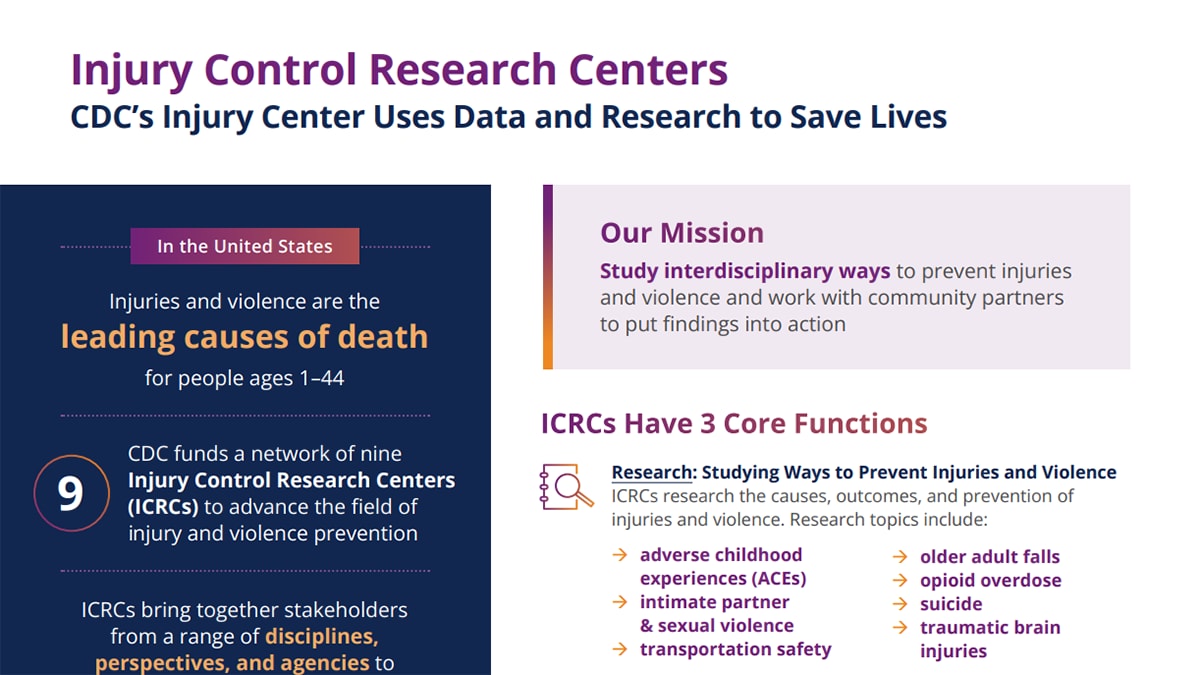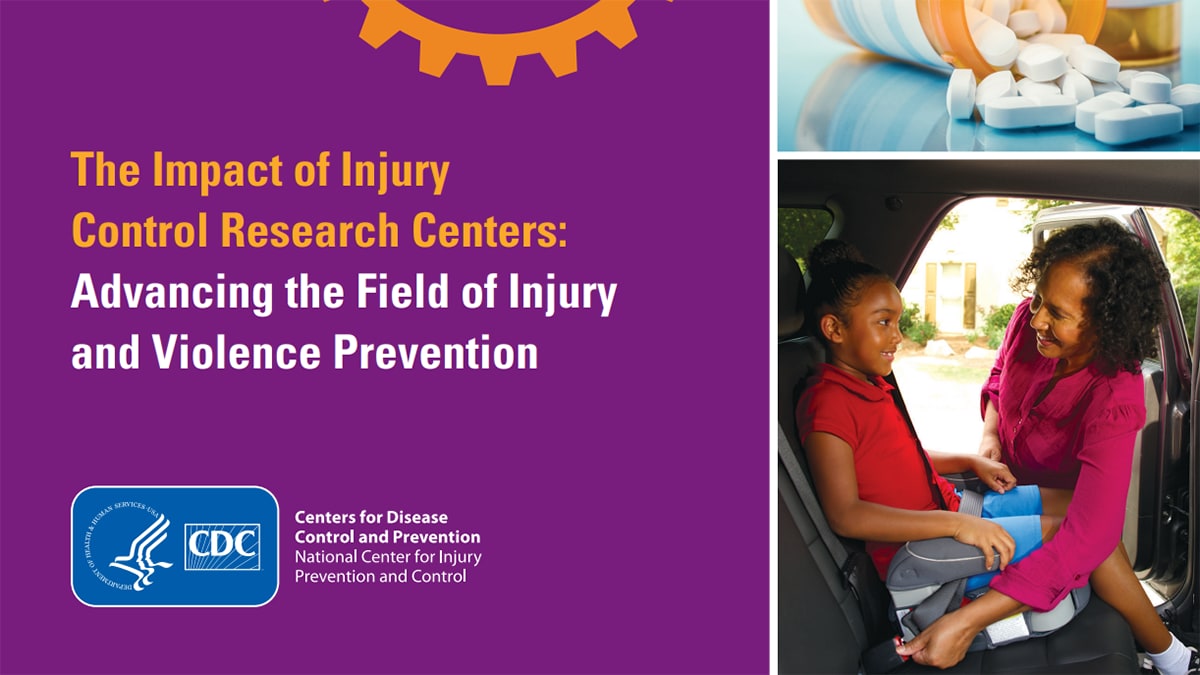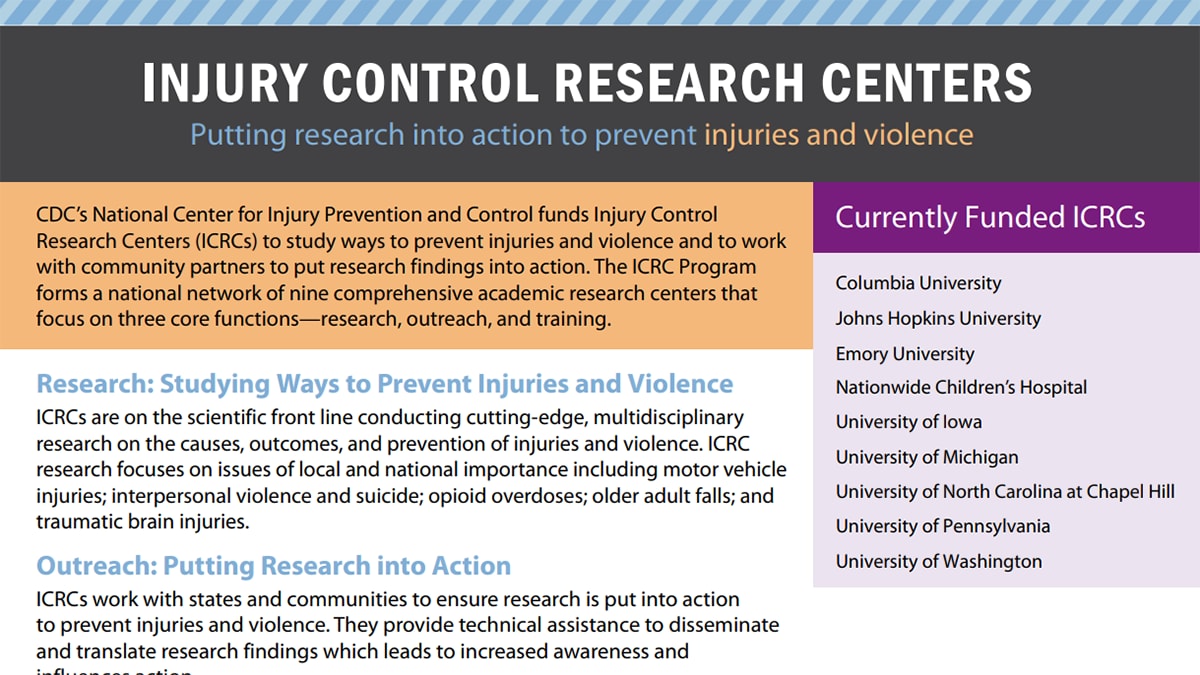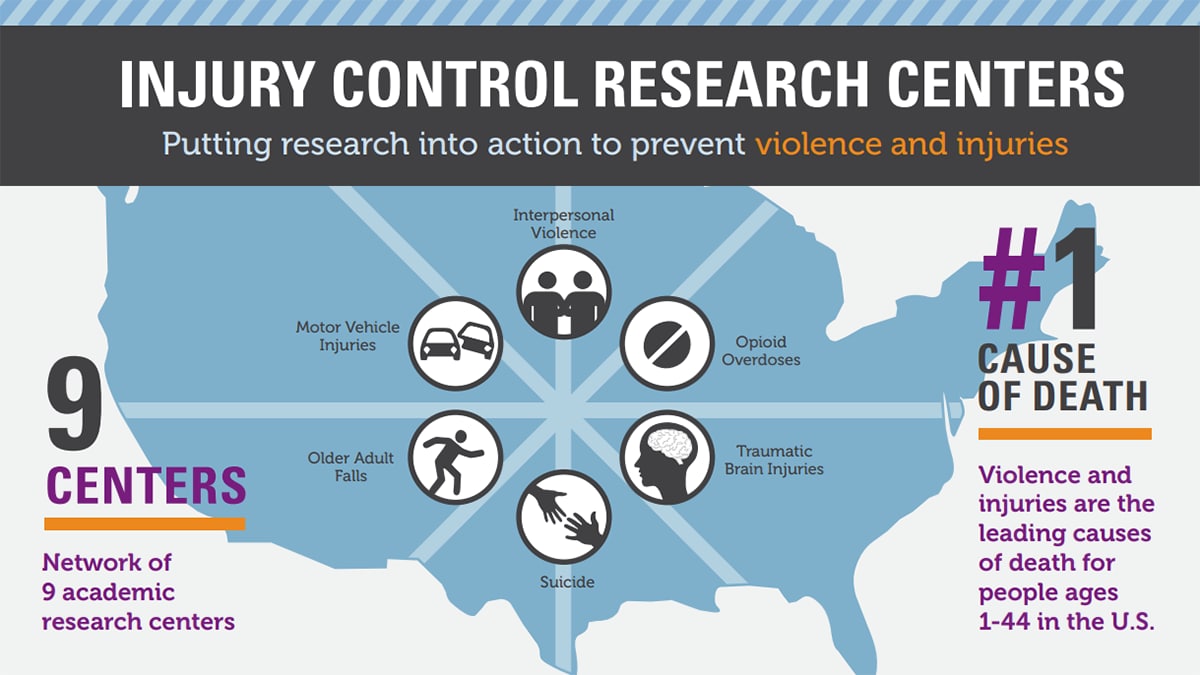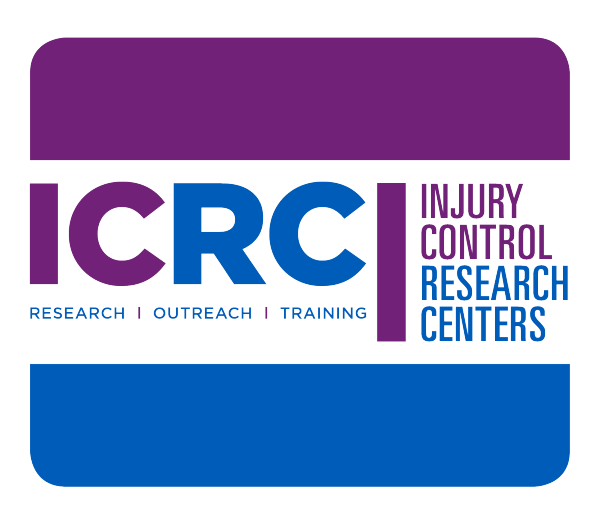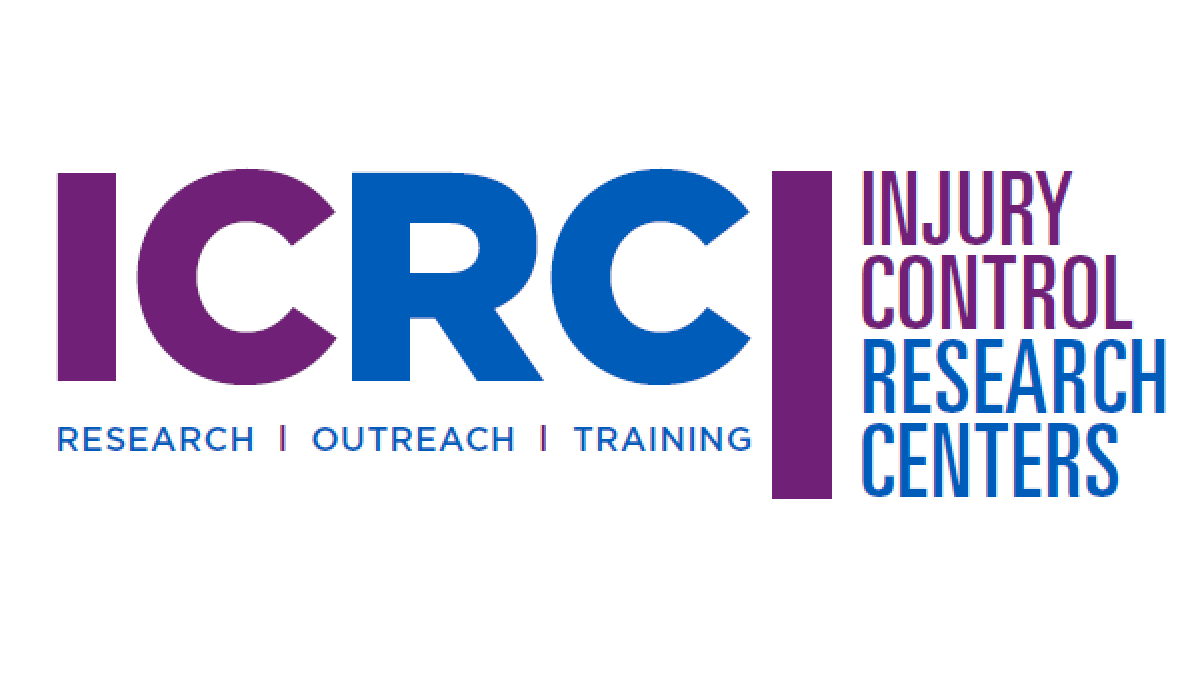Key points
- Injury Control Research Centers (ICRCs) put research into action to prevent injuries and violence.
- There are eleven ICRCs across the United States.
- ICRCs three core functions are research, outreach, and training.
Overview
Injury Control Research Centers (ICRCs) bridge the gap between research and practice, translating scientific findings into effective strategies to prevent injuries and violence. They leverage their expertise and promote collaboration across various disciplines and agencies to address major public health challenges. ICRCs put knowledge into action, making a tangible difference in the lives of individuals and communities through research, education, and outreach.
ICRC core functions
Research: Studying Ways to Prevent Injuries and Violence
ICRCs are on the scientific front line conducting cutting-edge, multidisciplinary research on the causes, outcomes, and prevention of injuries and violence. ICRC research focuses on issues of local and national importance including interpersonal violence, opioid overdoses, older adult falls, transportation safety, traumatic brain injuries, and suicide.
Outreach: Putting Research into Action
ICRCs work with states and communities to ensure research is put into action to prevent injuries and violence. They provide technical assistance to disseminate and translate research findings which leads to increased awareness and influences action.
Training: Building the Field
ICRCs play a critical role training and developing the current and next generation of researchers and public health professionals. This helps ensure there is an adequate supply of qualified practitioners and researchers to advance prevention research, address new problems, and reach new populations across the nation.

